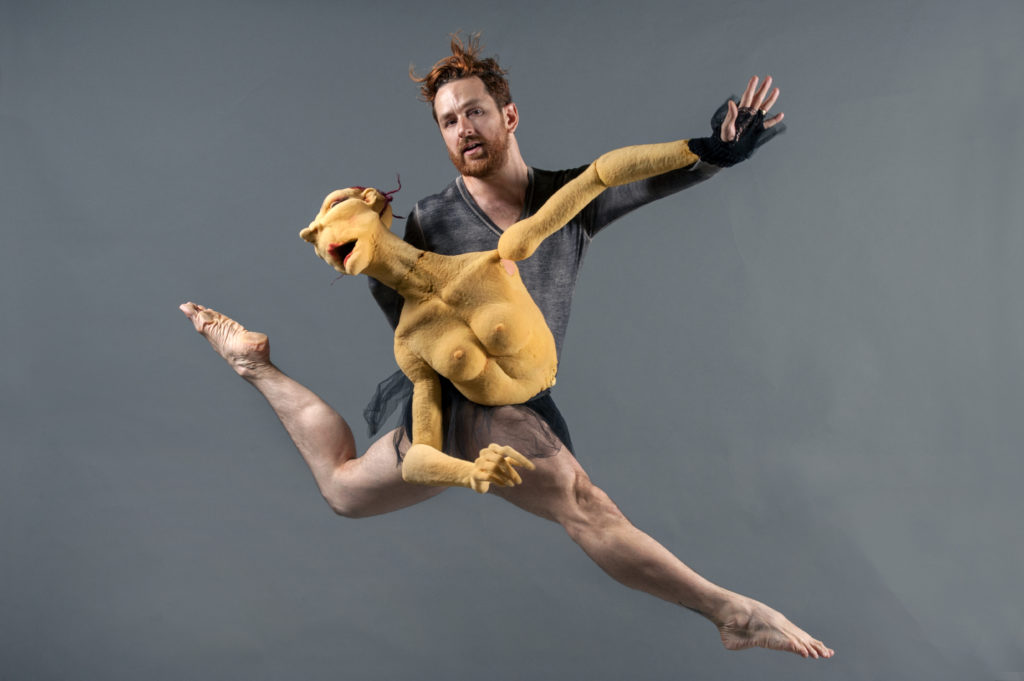Puppetry in Dance Theatre

While most of us aspiring contemporary dancers will decide to undergo formal training under the foundations of Graham, Cunningham, Limon and various others, a small subset has diverted into the wondrous world of puppet theatre. One such performer, choreographer and now puppeteer is Duda Paiva. After a few more years thriving as an independent theatrical artist, he initiated the Duda Paiva Company in Amsterdam, Holland, in 2004. Let's see what he has to say!
Diversity is not only statistics
Dance companies have recently undergone a transformative journey, transcending their traditional role as exclusive art producers to becoming multifaceted entities. No longer confined to nurturing creativity and employing talent, these organizations now grapple with a broader spectrum of responsibilities, some of which extend beyond the realm of arts and culture — the very essence they are entrusted to represent. In an era marked by shifting geopolitics and cultural dynamics, dance companies find themselves compelled to address pressing issues such as diversity, inclusivity, and institutional transparency.
While the industry's move towards greater democracy is encouraging, it brings forth challenges, one of which is the application of diversity metrics in employment strategies. In ensembles of five to six, stretching to larger ones containing 20 and above, a mandated percentage must still represent different ethnicities, sometimes at the expense of merit. So, for dancers navigating auditions, this can be a source of frustration. However, adopting a panoramic view unveils a broader perspective, as exemplified by individuals like Duda.
Diversity, when approached with genuine intent, holds immense promise. The potential of a collective comprising diverse minds is often underestimated, particularly in the arts. It's imperative to recognize that diversity goes beyond a mere statistical paradigm. Varied backgrounds entail distinct training and technical approaches, diverse movement languages, unique physicalities, and nuanced visceral sensitivities. While some may perceive it as an exciting palette of global perspectives, choreographers like Duda view diversity as a window into unparalleled creative inspiration.
Making his own dance partner ( with soft foam)
My entry into the world of dance theatre was an unexpected journey sparked by a chance encounter with Gecko Physical Theatre during their tour in Hong Kong back in 2015. While luminaries like Pina Bausch and Lloyd Newson were yet to influence me, Gecko's performance ignited a curiosity beyond the parameters of the dancing body. It prompted a question that would eventually reshape my perspective about live performances: How can dancers extend themselves when the body operates within certain physiological limits? The answer, it seemed, lay in the enchanting world of puppetry.
While Duda’s company isn’t the only one in the puppetry business, they are certainly one of the best and with some bias, my favourite. Their handcrafted puppets, each a star in its own right, fall into three main categories:
Hybrids are puppets with only half of their body and depend on its puppeteer, who lends him (or her) his arms and/or his legs. Puppeteer and puppet are ‘glued together’, like Siamese twins.
Full size puppets are complete figures. The puppeteer can insert his arm into the foam figure, but without lending him his arms or legs as part of the puppet-body.
Body parts: the puppet consists of only a head, a hand or other part of a body. This puppet depends on the puppeteer to appear ‘complete’. Body parts allow the puppeteer to move fast and to express himself in (almost) limitless ways.
Despite being a relatively small ensemble, the Duda Paiva Company ingeniously crafts their dance partners from soft foam, moulding and bonding with them from one show to the next. Some puppets are eerily human-like, challenging belief in the presence of an actual dancer on stage, while others embody beautifully distorted versions of themselves. Whether puppet or puppeteer, the result is as how Duda aspired to be - consistently spellbinding and uniquely contemporary.
Creativity versus entrepreneurship, how to draw the effective line
The career of an artist remains one of the most interesting and enigmatic journeys anyone can tell. One of the reasons I produced this podcast was simply to uncover some of these most fascinating individuals or organisations and how they’ve navigated through the performing arts. Most dancers do not lack creativity, spontaneity and virtuosity, but often stagnate professionally due to one key missing ingredient - entrepreneurial know-how.
In the performing arts, operating in a gig economy demands that artists learn to navigate both the physical and financial aspects of their careers. Becoming an entrepreneur, in this context, doesn't necessarily involve diving into invoices and managing multiple bank accounts. Instead, it's about understanding one’s professional offerings in relation to the market – essentially, Economics 101. Recognizing the demand for your talents and finding effective means to meet that demand is key.
Duda, like many of his artistic peers, isn’t particularly fond of the non-creative aspects of the job. He wisely circumvents this by enlisting the support of Pris Kamas, a highly capable assistant who navigates the entrepreneurial whirlpool, allowing Duda to stay immersed in his creative space. While creatives often strive to preserve their artistic sanctuaries, complete ignorance of the entrepreneurial side can result in a cascade of both creative and financial predicaments.
Check out the full episode here!
08.07.2024















